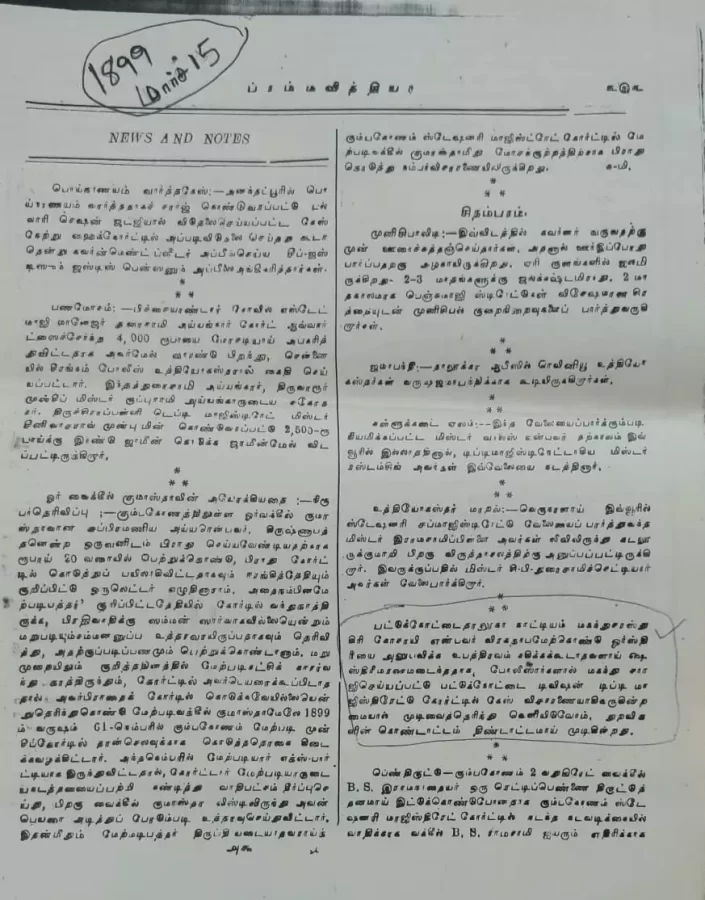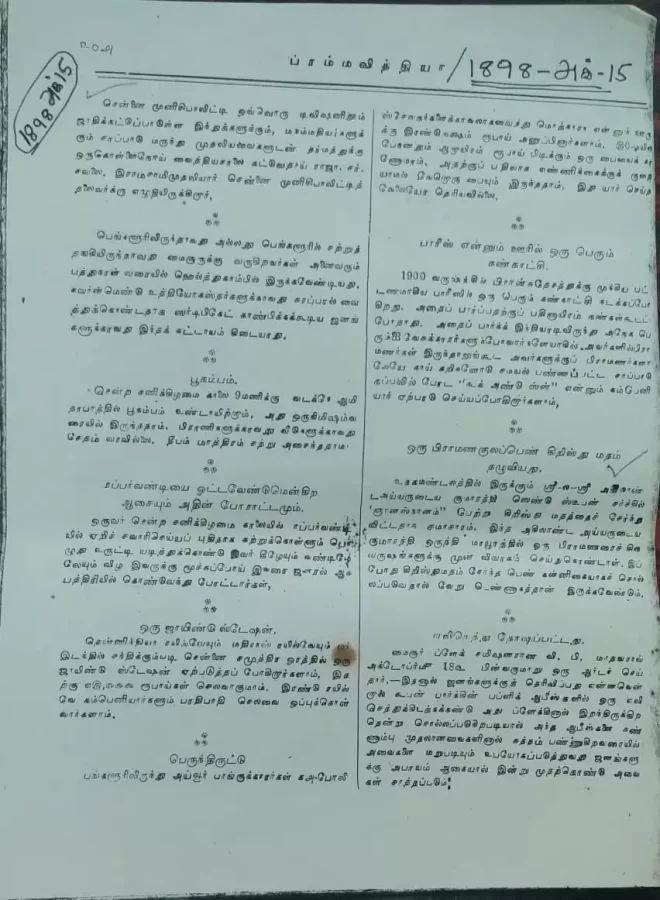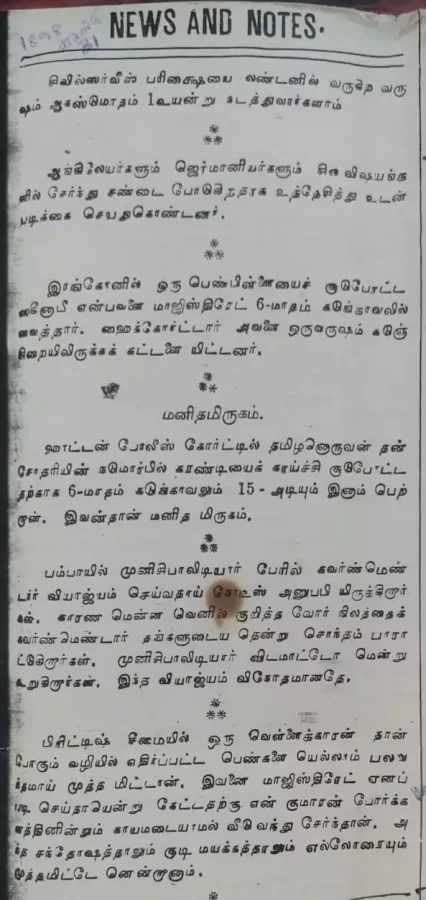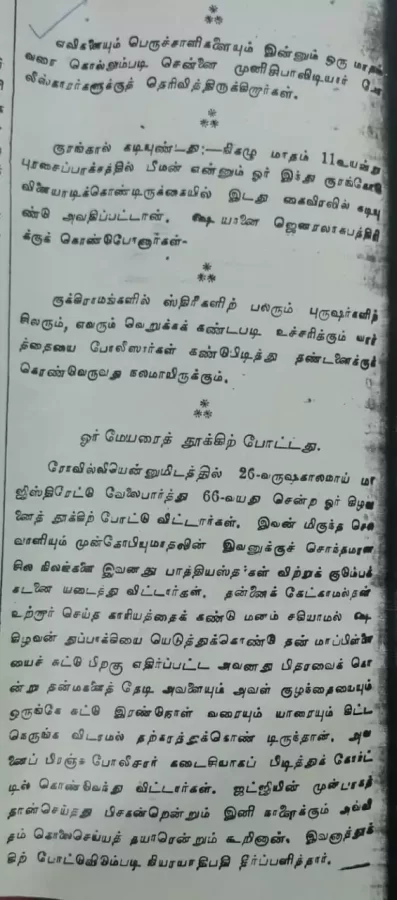Read in : தமிழ்
The paran (attic) is home to old bottles, vessels gifted by grandmothers and great-grandmothers to their grand-daughters for their weddings, easy chairs that used to keep the grandfathers, mostly couch potatoes comfortable in the twilight of their life, four-legged chairs bereaved of one-leg, a wedding blanket in tatters, walking sticks that walk no longer, pickle jars now holding nothing but cobwebs, moth-eaten postcards and inland letters dripping with affection close relations expressed… all memories and materials that sank into oblivion are sleeping uncared for and unnoticed as rejects in the paran. Among these, I found a rare artifact this week – a Tamil-Sanskrit bilingual magazine.
Serendipity led me to a trunk-box of my grandfather’s times. The books, dog-eared and silverfish-eaten going back all the way to 1950 or earlier, are now a hunting ground of moths and all inconceivable insects.
“In the trains run by the Southern Railway, the Stone company was permitted by the administrators to expand the shine from electricity glistening like lightning over all compartments. Here afterward, the coconut oil contractors’ situation will be worse.” This excerpt that seems strange is from the 1899 Tamil-Sanskrit (Grantha script) magazine.
In the later part of the 19th century, the Tamil-Sanskrit magazine ‘Brahmavidya’ was published from Chidambaram, edited by Seenivasan Sastrigal (Seenivasasn Dheekshithar?), an expert in Vedas and Vedanta. The king of the princely state of Ramanathapuram was its patron
What is surprising about it is that it is a bilingual magazine and that too one with Tamil and Sanskrit, was published as far back as 1899. What’s more, coconut lamps were used on trains before they were fitted with electric lights in those days.
In the later part of the 19th century, the Tamil-Sanskrit magazine ‘Brahmavidya’ was published from Chidambaram, edited by Seenivasan Sastrigal. an expert in Vedas and Vedanta. The king of the princely state of Ramanathapuram was its patron.
Also Read: From the attic: A Tamil book by Srinivasa Sastry
Almost the same size as the old Illustrated Weekly, this magazine has pages that are each divided by a vertical line, earmarking one side for Tamil and the other for Sanskrit.
The content was heavily philosophical. Most of the articles it published waged a proxy war among the proponents of several schools of thought such as Advaita, Vishishtadvaita, Saivism and so on. Their highly metaphysical arguments are mind-boggling to a reader in the present and some of it just goes over one’s head.
The famous verbal battle between Soolai Somasundara Naicker, an ace Saivite scholar, and Saadhurathinam Chettiar, a Vedanta maha vidwan non-pareil, was waged in this magazine. (Reputable Tamil scholar Maraimalai Adigal aka Swamy Vedachalam was Somasundara Naicker’s student; Ko. Vadivel Chettiar, an Advaita expert and Tamil scholar, was a student of Saadurathinam Chettiar).
Most of the articles published in the magazine waged a proxy war among the proponents of several schools of thought such as Advaita, Vishishtadvaita, Saivism and so on
Somasundara Naicker was a great scholar, but was known to throw the occasional tantrum. Once while writing in a magazine, he termed a Vaishnavite scholar as a son of ‘avisaari.’ The issue was taken to the court, where Somasundara Naicker argued, exhibiting his skillful mastery of Tamil, that the word ‘avisari’ was not at all an expletive. People mistakenly think it is a swear word meaning harlot, he said, adding that the real meaning of the word was ‘one without any worry’.
The word he used to mean worry was ‘visaaram’. Yet, the judge was not ready to buy this argument and finally slapped him with a fine of Rs 100 and also ordered him to tender an apology in writing. (About this case I will write later).
Also Read: From the attic, an encyclopedia of fraud tumbled out
Initially focusing only on philosophy, the Brahmavidya later on added the column ‘News and Notes’ under which inland and foreign news reports were published.
The column containing political developments and all other reports was interesting. It was a potpourri of local scandals, crimes, other cases and what was being said on the grapevine. Excerpts from the column are given below.
(Note to the reader: The 19th century Tamil of the excerpts, whose images are displayed, may feel like a tough terrain to navigate. But it would be fruitful to try and read them, despite the difficulty).







Read in : தமிழ்











